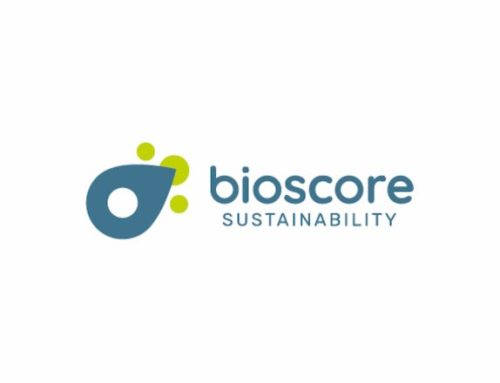
Like all signatories to Tourism Declares Climate Crisis initiative, we have committed to the following five actions:
1. Develop a ‘Climate Emergency Plan’ within the next 12 months, which sets out our intentions to reduce carbon emissions over the next decade.
2. Share an initial public declaration of our ‘Climate Emergency Plan’, and update on progress each year.
3. Accept current IPCC advice stating the need to cut global carbon emissions to 55% below 2017 levels by 2030 in order to keep the planet within 1.5 degrees of warming. We’ll ensure our ‘Climate Emergency Plan’ represents actions designed to achieve this as a minimum, through delivering transparent, measurable and increasing reductions in the total carbon emissions per trip arising from our operations and events.
4. Encourage our members and partners to make the same declaration; sharing best practice amongst peers; and actively promote the use of the GSTC Criteria that include clear demand for climate change mitigation.
5. Advocate for change. We recognize the need for system change across the industry, and call for urgent regulatory action to accelerate the transition towards zero-carbon air travel.
The GSTC Criteria references to climate change mitigation:
GSTC Industry Criteria: D2.2 Transport
The organization seeks to reduce transportation requirements and actively encourages the use of cleaner and more resource efficient alternatives by customers, employees, suppliers and in its own operations.
Indicators:
- Information is provided and promoted to customers on alternative (climate friendly) transport options, for arrival, departure and during their visit.
- Alternative transport options (e.g. bike rental, car sharing, pick-ups) for guests and staff are provided or facilitated.
- Markets accessible by short and more sustainable transport options are favoured.
- Local suppliers are favoured and daily operations seek to minimize transport use.
* low-carbon transportation where possible; slow travel and longer stays
GSTC Destination Criteria v2: D10 GHG emissions and climate change mitigation
The destination has targets to reduce greenhouse gas emissions, and implements and reports on mitigation policies and actions. Enterprises are encouraged to measure, monitor, reduce or minimise, publicly report and mitigate greenhouse gas emissions from all aspects of their operation (including from suppliers and service providers). Offsetting of any remaining emissions is encouraged.
Indicators:
- Published target for percentage of emissions reduction by specified date.
- Annual climate report, including monitoring and mitigation actions.
- Supported campaign or other engagement with tourism enterprises on reduction and mitigation of emissions.
- Action to reduce emissions from public sector operations.
- Information for enterprises and visitors on offsetting schemes that meet recognised standards.
GSTC Destination Criteria v2: D11 Low-impact transportation
The destination has targets to reduce transport emissions from travel to and within the destination. An increase in the use of sustainable, low-emissions vehicles and public transport and active travel (e.g., walking and cycling) is sought in order to reduce the contribution of tourism to air pollution, congestion and climate change.
Indicators:
- Investment in more sustainable transport infrastructure, including public transport and low emissions vehicles.
- Information promoted to visitors on alternative transport options to and within the destination
- Data on visitor use of alternative transport modes.
- Improvement and promotion of cycling and walking opportunities.
- Prioritization of visitor markets accessible by short and more sustainable transport options.
- Public sector and tourism enterprises prioritise low-impact transportation in their own operations.
GSTC Conferences and Operation
Ours is not a business-as-usual organization and neither are our conferences. Our conferences are confined to specialized players that seek to or already apply sustainability standards in their work. We interact mostly with that community via conference calls and webinars, but we see great value in enhancing the effectiveness of all with occasional in-person gatherings.
The GSTC is a global organization that is virtual – we have no offices, meaning we don’t emit GHG from any offices nor from staff commuting. Certification Bodies that we work with and strengthen are scattered throughout the world. While we conduct most of our work and interactions via web conferencing, webinars, etc., occasional in-person meetings tremendously facilitate more effective action from our network of impact-makers.
We preach slow travel at every turn…less frequent but longer stays…choosing low-carbon transport… urging land transport providers and hotels to take strong measures to move rapidly to clean energy because they have more opportunities to do so than aviation currently does. Additionally, the battle against overtourism from a global population of 7.6 billion people includes low-season visits as we have done with our conference.
Many of our members extend their stay in the destination before and after the conference to appreciate the destination, to provide more personal benefit to the amount of carbon emitted during their flights, and to provide economic support to the residents. We operate green conferences, with paper and string name badges, beef-free menus and vegetarian options as the default, limited food waste (a major contributor to GHG), no single-use plastic, transport by foot or bus, and more. Our conferences hosts fund carbon offsetting activities.
GSTC Conferences aim to engage major players in sustainability to strengthen the power of partnership via occasional in-person meetings. Last year we were in the Azores and Northern Thailand. In 2018 we were in Botswana and engaged in a heavily African network; the year before in Chile; and before that in Korea and in Greece. Many impactful players we work with see us once in 3 or 4 years.
The conferences facilitate meaningful exchanges between practitioners from both the public and private sectors in creating or improving collaborative approaches to making their travel services more sustainable. We are confident that those goals are largely met and that they will have impacts that cascade out widely relative to the numbers of people and carbon emitted from operating a global conference.




